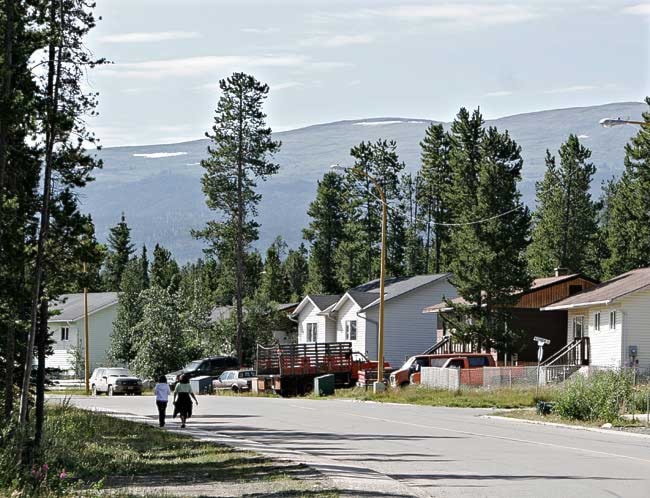If you’re one of Whitehorse’s worst drunks, your housing options are pretty slim.
High-risk alcoholics can sack out for the night at the Salvation Army shelter, go to the hospital or find themselves dumped in the RCMP drunk tank.
That’s it. But there used to be another option.
In 1994, Kwanlin Dun First Nation offered a safe house for people struggling with alcohol and drug addictions.
“They called it a safe house, but more or less it was understood that we had a large number of people that had a lot of alcohol and drug issues who needed somewhere to live and special care,” said Loretta Edzerza, who was involved in the project.
The house on Hanna Crescent in McIntyre subdivision was set up like a hostel with a couple of bunk beds in each room that could sleep 10 to 12 men.
The residents used to take their social assistance cheques and drink them away.
At the safe house, they turned over their social assistance to pay for the house, full-time staff and food.
The staff were there to monitor the occupants and ensure the house was kept clean.
None of the workers had any medical training, but if anything happened they were to call the RCMP or ambulance.
And if somebody was cut, or if a dressing wasn’t changed, staff would make sure they received medical attention before the wound got infected.
Staff also cooked for residents, feeding them breakfast, lunch and dinner.
Those were meals they probably would have missed had they been living on the street.
“They really liked the meals; they definitely made use of that,” said Edzerza.
“They were up for breakfast and they were sure they were there at 12 and 5.”
After all of the social assistance money for housing and food was given over to the safe house, the residents were left with about $90 per week.
Most of this was spent on alcohol.
The residents were not allowed to drink at the safe house, but it was not forbidden to return home intoxicated.
As long as they behaved themselves when they came home, there was no problem.
Residents were expected to keep themselves and the house clean.
Staff had a system of incentives to entice occupants to do housework, handing out cigarettes for tasks like cleaning rooms or doing the laundry.
The safe house even had a couple of extra beds for people to stay the night if they didn’t have any other place to go.
Often, these visitors were people visiting from the communities and not members of the Kwanlin Dun First Nation, said Edzerza.
“That way we knew that they weren’t going to freeze to death outside.”
As a result of the housing a few residents sobered up, but many did not.
But getting the residents to quit drinking was never the intention of the program.
“It opened doors for it, but it wasn’t likely that they’d move in that direction,” said Edzerza.
“They’d been in that habit for years and it wasn’t likely that they were going to kick that habit.
“It got them off the street; it gave them a place to sleep and it made sure that they ate three meals a day.”
Unfortunately, the safe house didn’t last much longer than a couple years.
It was difficult to keep staffed, a problem that contributed to its closure.
A wonderful group of workers began the program, but they quickly burned out, said Edzerza.
“It was just very difficult for those people to be in that situation, day in day out, because they’re dealing with a high-risk group of people,” she said.
“It’s like living with an alcoholic.
“Without the proper staff to keep it stable we couldn’t keep it open.”
The program also received little funding, basically relying on the residents’ social assistance cheques.
“We just exhausted all our energy and resources trying to make it happen, but didn’t get anywhere,” said Edzerza.
“There was really no other support from the government.”
When the safe house closed down, these people wound up back on the street.
“They were back to having nothing,” said Edzerza.
“We tried to put some of them in apartments that we have here, but they’re not that safe even there.”
A lot of the safe-house residents have died in the 15 years since the program was shut down, said Edzerza.
Others are barely getting on.
The First Nation is still looking into solutions to housing its high-risk members struggling with addictions, but a new safe house isn’t in the works.
If it started up, there would need to be more financial help from the territorial government.
Edzerza recalls some of the residents sitting back with smiles on their faces, enjoying having a full stomach and a house of their own.
For the first time in a long while they were healthy and eating properly.
“It definitely helped,” said Edzerza. “It was sad when we had to close it.
“They felt it when it closed.”
